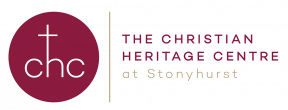Author: stefan
Men’s Retreat – Spiritual Exercises of St Ignatius 2025
A 5 day retreat for men based on the spiritual exercises of St Ignatius, preached by the monks of St Joseph’s Abbey, Flavigny
Venerable Francis-Xavier Nguyen Van Thuan
Explore how Cardinal Van Thuan’s prayer life sustained him through thirteen years of imprisonment at the hands of Communists
Maria Goretti
Read about Saint Maria Goretti and her incredible act of forgiveness, and how her own prayers turned her murder into a devout Christian
CLF: a week of prayer, study and friendship for teens
Stefan Kaminski reflects on the first week with this year’s cohort on the Christian Leadership Formation programme
Padre Pio
Padre Pio, one of the most exceptional spiritual masters of the twentieth century, lived an intense life of prayer
Therese of Lisieux
Read about how Saint Therese of Lisieux’s “Little Way” was powered by the simple, rote prayers of the Church
Marriage Preparation 2025
The CHC offers courses for couples preparing to marry in the Catholic Church
St Thomas More and Religious Freedom
A series of three conferences for clergy exploring anthropology, marriage and human formation
TOB clergy days
A series of three conferences for clergy exploring anthropology, marriage and human formation
